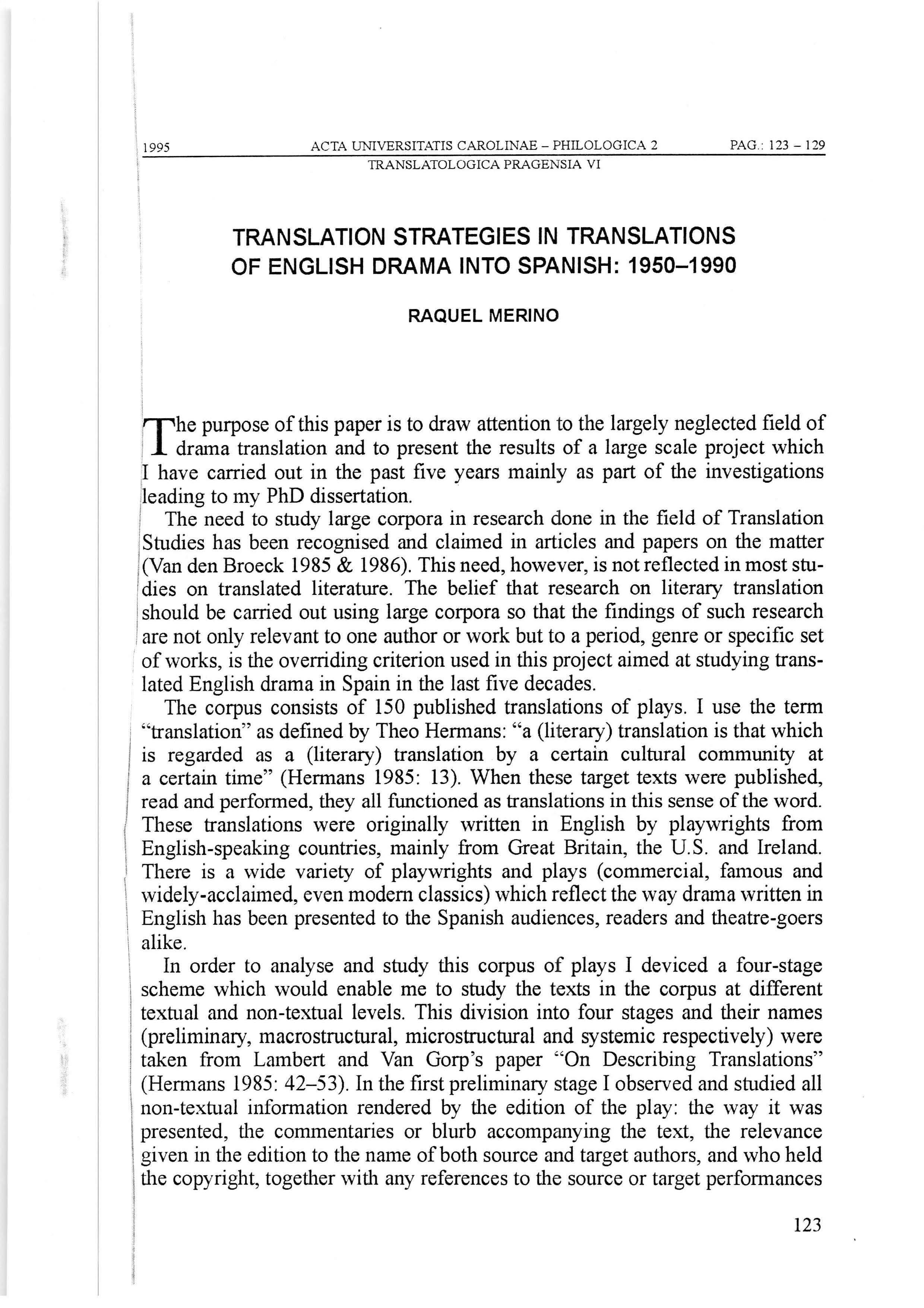Translation strategies in translations of English drama into Spanish: 1950-1990
Translatologica Pragensia 6 (2) : 123-129 (1995)
Abstract
[EN] This paper presents the results of a study of a large corpus of 150 drama translations published in Spain in the second half of the 20th century. Textual comparison on a macrostructural level of 100 bi-texts (Spanish target texts and English source Texts) preceded a microtextual comparative study of a small selection of translations which in turn led to further analysis in the systemic stage. In all levels of description and comparison of drama texts minimal structural unit of drama, the réplica or utterance, proved instrumental. Three global strategies were found: reading editions tend to conform to the adequate type of translation, favouring the source text, author and culture. Acting editions, on the other hand, conform to the acceptable type, favouring the target pole. Deletion and addition in relation to the original are the main strategies found in acting editions, deletion being, by far, the most common strategy used in stage-oriented texts. Acting editions often contain ‘manipulated’ texts in contrast to the tendency of reading editions that present closer versions of the original. Various socio-cultural factors may explain the degree of manipulation of target drama texts, the most important being the relations of power and status within a given theatrical system.
 Back
Back
